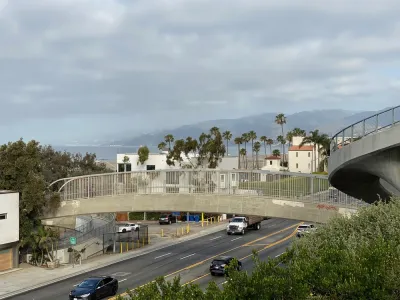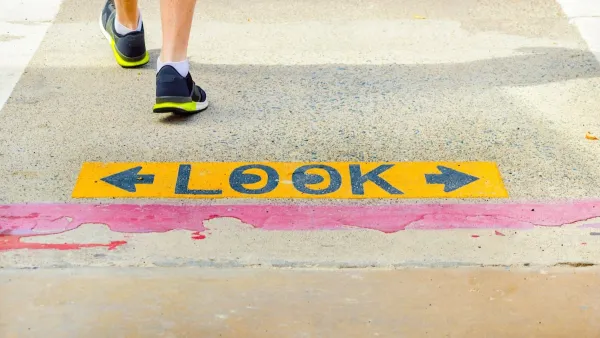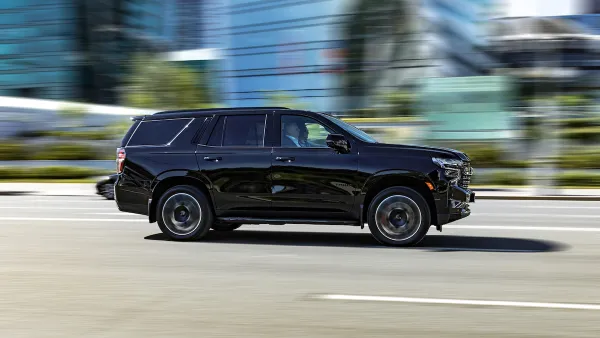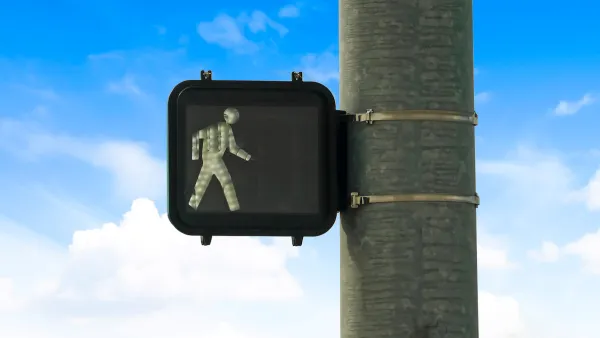Close to one fifth of pedestrian deaths in the United States happen on controlled-access freeways, suggesting a critical need for safety improvements on major roads.

“A surprising 17 percent of U.S. pedestrian deaths last year happened on roads where people theoretically should never be walking — and that troubling finding should prompt a conversation about why so many of them are doing it anyway,” writes Kea Wilson for Streetsblog. This data comes from an analysis by the Governors Highway Safety Association, which proposes that most pedestrians killed on freeways are stranded motorists, utility or construction workers, or first responders.
Research shows otherwise, writes Wilson. In fact, “a recent Insurance Institute for Highway Safety study found that just 18 percent of walkers killed on freeways between 2015 and 2017 were motorists whose vehicles had recently been disabled, and just 1 percent were road workers.” Most people killed on freeways were “people who chose to — or had no choice but to — walk on or near roads with vehicles traveling at speeds that will kill a walker nearly 100 percent of the time.”
“The question of why so many pedestrians are walking on roads that weren’t designed for them is hard to answer definitively, but experts say that their sheer prevalence of these deaths signals that they’re not just a horrifying anomaly.” The article cites the sheer prevalence of freeways in U.S. cities and the growing size of vehicles as two factors in rising death rates.
Jessica Cicchino of the IIHS says this signals a need for improved pedestrian infrastructure on or near freeways, many of which cut through urban neighborhoods indiscriminately, isolating residents from places they need to go. “That might look like installing pedestrian crossing bridges, overpasses, or underpasses at the site of frequent crashes, improving lighting along road shoulders to prevent the 48 percent of walking deaths that occur on unlit freeways after dark, or increasing access to transit so people on foot aren’t tempted to brave a dash across an interstate in the first place.
FULL STORY: Why Nearly A Fifth of Pedestrians Deaths Happen on Freeways — And How to Stop It

Analysis: Cybertruck Fatality Rate Far Exceeds That of Ford Pinto
The Tesla Cybertruck was recalled seven times last year.

National Parks Layoffs Will Cause Communities to Lose Billions
Thousands of essential park workers were laid off this week, just before the busy spring break season.

Retro-silient?: America’s First “Eco-burb,” The Woodlands Turns 50
A master-planned community north of Houston offers lessons on green infrastructure and resilient design, but falls short of its founder’s lofty affordability and walkability goals.

Test News Post 1
This is a summary

Analysis: Cybertruck Fatality Rate Far Exceeds That of Ford Pinto
The Tesla Cybertruck was recalled seven times last year.

Test News Headline 46
Test for the image on the front page.
Urban Design for Planners 1: Software Tools
This six-course series explores essential urban design concepts using open source software and equips planners with the tools they need to participate fully in the urban design process.
Planning for Universal Design
Learn the tools for implementing Universal Design in planning regulations.
EMC Planning Group, Inc.
Planetizen
Planetizen
Mpact (formerly Rail~Volution)
Great Falls Development Authority, Inc.
HUDs Office of Policy Development and Research
NYU Wagner Graduate School of Public Service




























